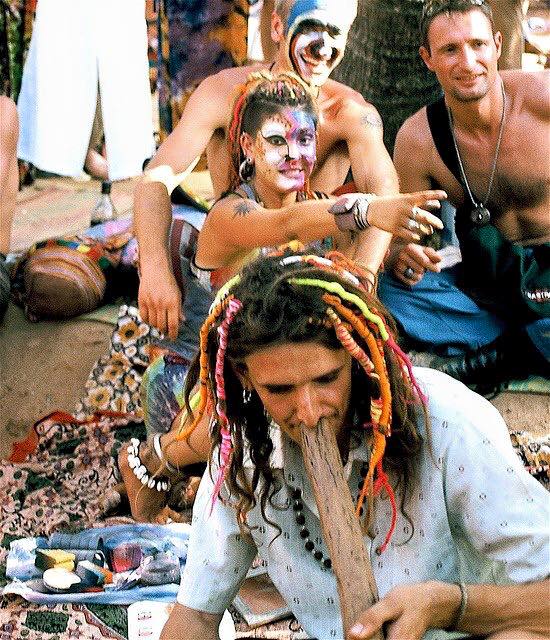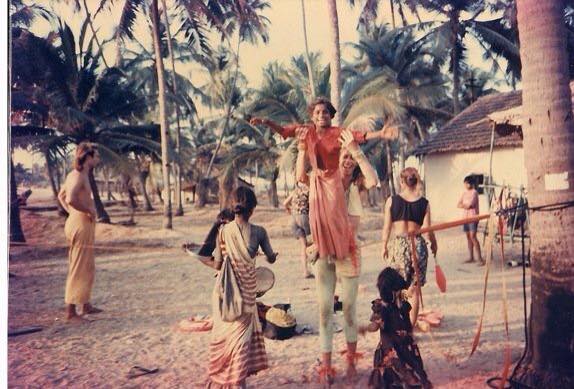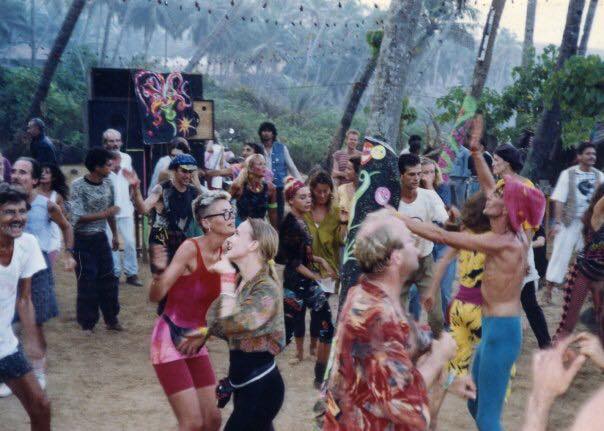Disco Valley, a popular rave venue in Vagator, Goa in 1988. Photo courtesy Ray Castle / I Love Goa.
Eight Finger Eddie performing at a rave in 1978. Photo by Sunny Schneider / I Love Goa.
In the 60's and 70's, local Goans and hippie tourists found a way to co-exist and cherish each other's cultures. Photo courtesy I Love Goa
Local fishermen and hippies on a boating trip on Chapora river in 1986. Photo courtesy I Love Goa.

Hash, LSD and other drugs were freely available in Goa, in part thanks to the lack of a police station in Anjuna. Photo courtesy Michael Palmierri / I Love Goa.
Full Moon Party at Anjuna beach in 1979. Photo by Gilbert Garcia / I Love Goa.
Party on top of Chapora Fort, Goa in 1988. Photo by Piers Ciappara / I Love Goa
An acoustic session party in Goa in the 1970s, before the scene was taken over by electronic music. Photo courtesy of I Love Goa.
A treehouse in Arambol, Goa in the 70s. Photo courtesy of I Love Goa.
Photo by Michael Palmieri / I Love Goa.
Goa Gil DJing in Anjuna, Goa in 1993. Photo courtesy I Love Goa.
Glimpses from a party that is coming down in Anjuna in 1991. Photo courtesy of I Love Goa.
Bamboo Forest Festival in Goa, a music festival held in 1993 and 1994. Photo courtesy of I Love Goa.
Anjuna Flea Market in the 1970s. Photo by Jacques Lasry / I Love Goa.
A party at the Arambol beach in 1991. Photo courtesy I Love Goa.

Disco Valley in 1992. Photo courtesy of I Love Goa.
Full moon party in 1983. Photo courtesy of I Love Goa.

Flea market in Anjuna in the early 70s, where hash was openly sold. Photo courtesy of I Love Goa.
It was the liberty, love and peace that Goa offered which attracted foreign visitors. Photo by Jacques Lastry / I Love Goa.
